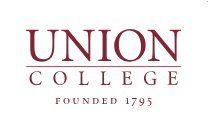What does Primo search?
Primo searches almost everything we have -- books, journal articles, conference proceedings, symposia, and more.
Access Primo from the library's website: https://www.union.edu/schaffer-library
Search Limitations
As you learn how to navigate Primo, Google Scholar, arXiv, SciFInder, and more, you will see their limitations. This is powerful as it helps you construct searches with a careful eye for what results you're getting.
Boolean searching
AND, OR, NOT -- operators that provide the ability to narrow, broaden, or restrict
What results would these searches provide?
- dislocation AND solar cells
- dislocation OR defect
- dislocation NOT shoulder
Tip: use Advanced Search to construct Boolean queries. If you do not want to use Advanced Search, make sure your Boolean operators are in ALL CAPS as in the examples above.
Special characters
* = asterisk = wildcard searching. Provides stemming.
" = double quotes = phrase searching. Provides specificity and proximity.
Compare: "nuclear energy" with nuclear energy
Citation chaining
Citation chaining allows you to look at the sources an article cited and what articles have cited the article you're examining. Primo helps make this easier through its citation buttons.
Review search results, looking for arrows up and down in a record. These buttons will find articles that cited the record (arrows up) and articles that the record cited (arrows down).
To find the sources that an author used to write the article represented by a record, use this icon: 
To find the sources that cited the article represented by a record, use this icon: 
Scientific journal articles
When looking at scientific articles, look for:
- Authors, affiliations, and grant information.
- Publication date.
- Publication / journal name.
- References.
- Figures.
- Keywords.
- Introduction.
High quality scientific articles will have most, if not all, of these important characteristics.
Look for articles that are peer-reviewed. This means that experts in the field reviewed the article for accuracy, research quality, and original ideas.

